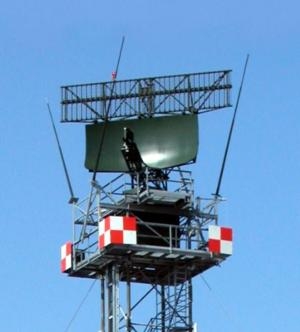Mon, Aug 24, 2015
Contract Enhances Air Traffic Control Capabilities Of The Royal Australian Air Force
Airbus Defense and Space has received two contracts worth approximately €130 million (approx $145.6 million) from Australia’s new Capability, Acquisition and Sustainment Group to equip and support nine military and civil/military Australian airfields with the world’s newest and most powerful airport surveillance sensors. Under the project “AIR 5431 Phase 2 – Fixed Defense Air Traffic Control Surveillance Sensors” ten ASR-NG (Airport Surveillance Radar - Next Generation) radars will provide enhanced input into the Australian National Air Traffic Management Surveillance picture and contribute to the achievement of Air Battle Management missions. Deliveries, including nine complete and one training system, are planned until end 2020.

“ASR-NG provides outstanding performance for wide-area surveillance around airbases as well as safe guidance of individual aircraft during take-off and landing”, said Thomas Müller, head of Airbus Defense and Space’s Electronics business line. The system also includes the secondary radar MSSR 2000 I allowing for reliable individual identification of more than two thousand transponder-equipped aircraft at a time. Other key features of the ASR-NG are the proven ability to mitigate wind farm effects, and a significant increase of the primary radar’s detection range to 120 NM. Additionally, it provides a new 3D height measurement of the primary radar and is resistant to interference by 4G/LTE mobile phone signals.
ASR-NG consists of a solid state primary radar using an advanced signal processing technology for medium and long-range air traffic surveillance. With its recently completed primary radar 3D height measurement capability, ASR-NG closes the gap between a Tactical Medium Range Air Surveillance Radar and a classical Air Traffic Control radar combining operational advantages of both at excellent value for money ratio. With its extraordinary detection capabilities for even slow flying or hovering helicopters above heavy clutter areas, ASR-NG meets operational needs for military air traffic and mission area control. ASR-NG integrates with the MSSR 2000 I (Monopulse Secondary Surveillance Radar) secondary radar for automatic identification of individual cooperative aircraft. It meets the requirements for the military and highly encrypted identification ‘Mode 5’, as well as the civil air traffic control ‘Mode S’ and ‘ADS-B’ requirements, which greatly improve aircraft
identification security and safety.
Airbus Defense and Space supplies air traffic control and identification systems in the military and civilian sector worldwide. Among others, the company equips the German Armed Forces’ airports with the ASR-S (Airport Surveillance Radar, S-Band) airport surveillance radar and delivers an approach control system for the military airfields in Switzerland. ASR-NG is contracted to be delivered to the Royal Canadian Air Force and in the frame of the MARSHALL program as well to the Royal Air Force in United Kingdom. In particular, the MSSR 2000 I secondary radar is deployed by the naval forces of Australia, UK, Germany, France, Norway and Finland for military friend-or-foe identification. For civil and military air traffic control, those identification systems are used in countries such as Germany, France, USA, UK, Bulgaria and the Philippines.
(Image provided by Airbus Defense and Space)
More News
Runway Lead-in Light System Runway Lead-in Light System Consists of one or more series of flashing lights installed at or near ground level that provides positive visual guidance a>[...]
Aero Linx: Aviation Without Borders Aviation Without Borders uses its aviation expertise, contacts and partnerships to enable support for children and their families – at hom>[...]
Dave Juwel's Aviation Marketing Stories ITBOA BNITBOB ... what does that mean? It's not gibberish, it's a lengthy acronym for "In The Business Of Aviation ... But Not In The Busine>[...]
From 2010 (YouTube Version): Yeah.... This IS A Really Cool Job When ANN's Nathan Cremisino took over the lead of our Aero-TV teams, he knew he was in for some extra work and a lot>[...]
Also: Junkers A50 Heritage, Montaer Grows, Dynon-Advance Flight Systems, Vans' Latest Officially, the Carbon Cub UL and Rotax 916 iS is now in its 'market survey development phase'>[...]
 ANN's Daily Aero-Term (04.24.24): Runway Lead-in Light System
ANN's Daily Aero-Term (04.24.24): Runway Lead-in Light System ANN's Daily Aero-Linx (04.24.24)
ANN's Daily Aero-Linx (04.24.24) Aero-FAQ: Dave Juwel's Aviation Marketing Stories -- ITBOA BNITBOB
Aero-FAQ: Dave Juwel's Aviation Marketing Stories -- ITBOA BNITBOB Classic Aero-TV: Best Seat in The House -- 'Inside' The AeroShell Aerobatic Team
Classic Aero-TV: Best Seat in The House -- 'Inside' The AeroShell Aerobatic Team Airborne Affordable Flyers 04.18.24: CarbonCub UL, Fisher, Affordable Flyer Expo
Airborne Affordable Flyers 04.18.24: CarbonCub UL, Fisher, Affordable Flyer Expo



